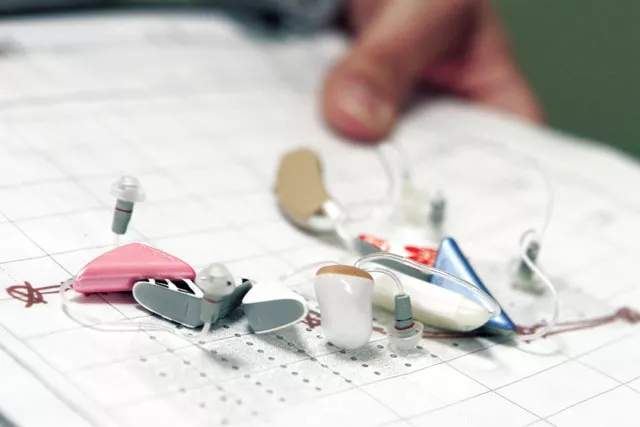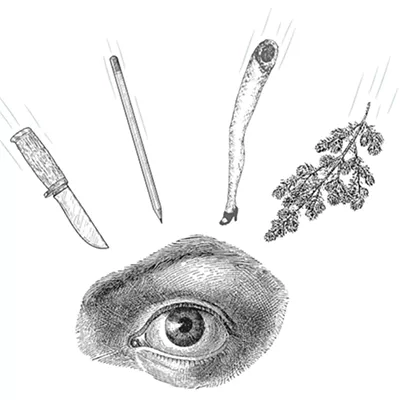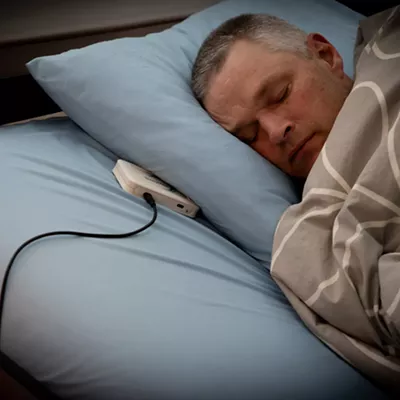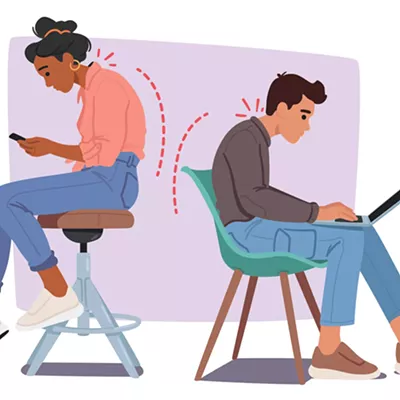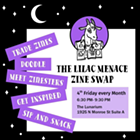Inside Holy Family’s Speech and Hearing Center, Delores Morrill models the latest in hearing aid technology. She swishes her head back and forth and pulls her hair back to show off her ears. There’s just one issue: You can’t actually see her hearing aid.
But then again, that’s exactly the point, audiologist Misty Shores says. As Baby Boomers age, they’re demanding products that don’t make them feel old. So, you can now buy tiny hearing aids that hide behind your ear (and yes, they come in all sorts of colors). “Baby Boomers still want things that look cool,” Shores explains.
The discreet behind-the-ear device, like the one Morrill wears, has a small, clear tube that runs over the ear and into the ear canal. Compared to traditional aids that fit inside the ear, patients experience less “occlusion,” the feeling that their ears are plugged up, Shores says. (However, people with severe hearing loss, particularly in lower frequencies, may still need in-the-ear aids.)
Most of the new, tiny models also come with directional microphones that automatically turn on and off depending on background noise. The price varies, but hovers around $1,000 per ear.
The biggest selling point, however, is simply the size. People who have refused to consider other hearing devices are willing to wear these because, often, no one can even tell, Shores says.
That’s been Morrill’s experience. Friends who have put off getting hearing aids are now looking at following her lead. “I would highly recommend them,” says Morrill, 80. “They’ve been extremely successful. I couldn’t be more pleased.”
Morrill first started researching hearing aids about two years ago. She was in her doctor’s office and couldn’t make out what he was saying. That’s the thing about hearing loss: You often don’t know what you’re not hearing. It tends to go gradually. You hear fewer birds, you ask people to repeat themselves and then, subtly, the world becomes a quieter place.
Until she finally bought the devices, Morrill had no idea how much she was missing every day. She vividly recalls going outside her home shortly after getting the hearing aids and being stunned by the chirping of birds and the rumbling water of the Little Spokane River, which runs nearby. She hadn’t heard those sounds in… she’s not sure how long.
“You cut out so much in your life and you don’t even know it,” Morrill says. “But when I could hear the river, that was a ‘wow’ moment for me.”
Like other hearing devices, hers requires some minimal maintenance, including cleaning and new batteries (about every two weeks). During annual hearing exams, Shores also checks the settings.
For Morrill, the hardest part may just be remembering that she’s wearing them — before getting in the shower. “They’re such a part of me,” she says. “I don’t even pay attention to them any more.”

